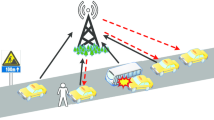Abstract
To satisfactorily gratify the scope of International Mobile Telecommunications 2020 (IMT-2020), 3GPP has launched the standardization activity of the fifth generation (5G) New Radio (NR) to deploy the first phase system (Release 15) in 2018 and the ready system (Release 16) in 2020. Different from the IMT-Advanced system solely enhancing the transmission data rates regardless the variety of emerging wireless traffic, the IMT-2020 system supports diverse wireless services including enhanced mobile broadband (eMBB), massive machine-type communications (mMTC) and ultra-reliable and low latency communications (URLCC) to fully capture wireless applications in 2020. Among all the wireless services, URLLC jointly demanding low latency and high reliability and mMTC emphasizing on high reliability create substantial impacts to the designs of NR air interface. On the advert of the conventional feedback based transmission in LTE/LTE-A designed for eMBB imposing potential inefficiency in supporting URLLC, in this paper, we revisit the feedbackless transmission framework, and reveal a tradeoff between these two transmission frameworks to latency and reliability guarantees. A multi-armed bandit (MAB) based reinforcement learning approach is therefore proposed to achieve the optimum harmonization of feedback and feedbackless transmissions. Our simulation results fully demonstrate the practicability of the proposed approach in supporting URLLC, to justify the potential of our approach in the practice of 5G NR.


Similar content being viewed by others

References
ITU, IMT Vision - Framework and overall objectives of the future development of IMT for 2020 and beyond Recommendation ITU-r M (2015)
Lien S-Y, Shieh S-L, Huang Y, Su B, Hsu Y-L, Wei H-Y (2017) 5G New radio: waveform, frame structure, multiple access, and initial access. IEEE Commun Mag 55(6):64–71
Ericsson, R1-1612923 : on URLLC Design Principles, 3GPP TSG RAN 1–87 (2016)
Cover TM, Thomas JA (2015) Elements of information theory. Wiley, Hoboken
Wong VWS, Schober R, Ng DWK, Wang L-C (2017) Key technologies for 5G wireless systems. Cambridge University Press, Cambridge
Bertsekas D, Gallager R (2015) Data networks. Prentice-Hall, New Jersey
Robin H (1952) Some aspects of the sequential design of experiments. Bull Am Math Soc 55:527–535
Asmussen SR (2003) Random walks, applied probability and queues. Stoch Model Appl Prob 51:220–243
Author information
Authors and Affiliations
Corresponding author
Rights and permissions
About this article
Cite this article
Lien, SY., Hung, SC., Deng, DJ. et al. Optimum Ultra-Reliable and Low Latency Communications in 5G New Radio. Mobile Netw Appl 23, 1020–1027 (2018). https://doi.org/10.1007/s11036-017-0967-x
Published:
Issue Date:
DOI: https://doi.org/10.1007/s11036-017-0967-x



